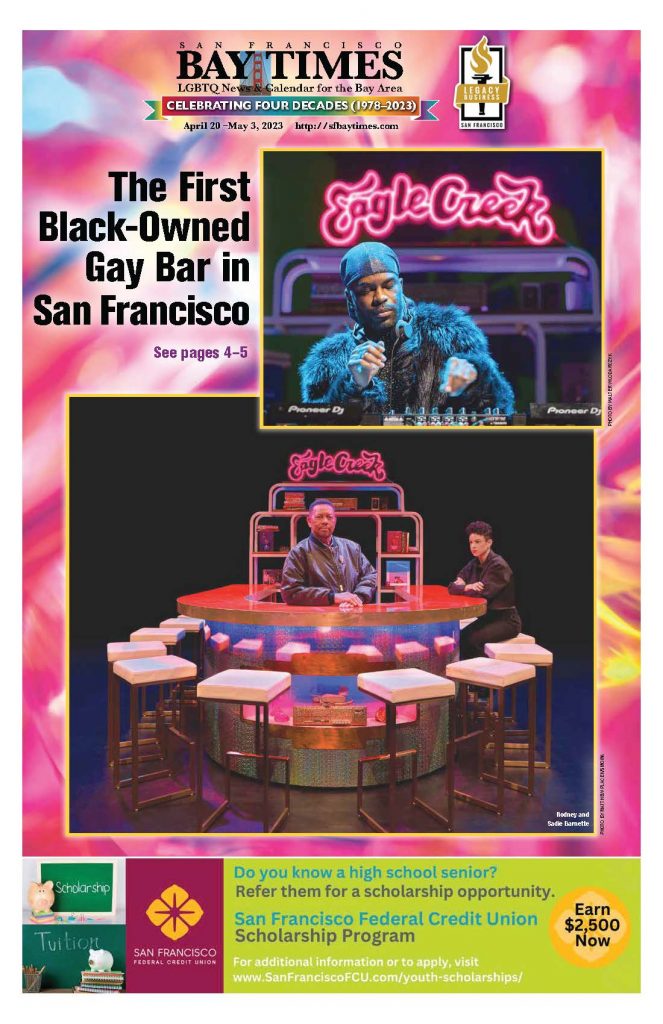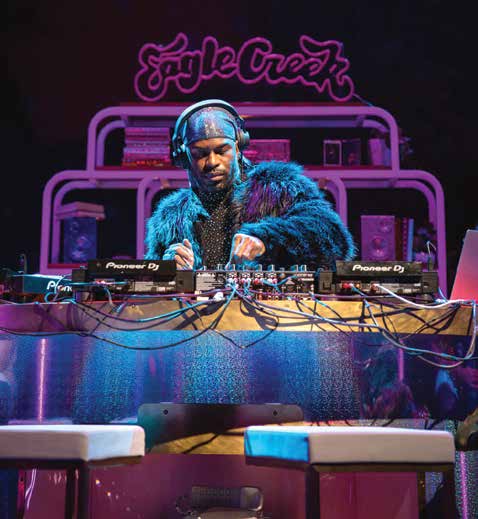
From April 22–May 11, 2023, the San Francisco Museum of Modern Art (SFMOMA) will present Sadie Barnette: The New Eagle Creek Saloon, an installation and performance series that reimagines San Francisco’s first Black-owned gay bar, opened by the artist’s father, Rodney Barnette, in 1990.
Originally located at 1884 Market Street, The New Eagle Creek Saloon served as a safe gathering space for the multiracial queer community marginalized by the city’s queer nightlife scene at the time. San Francisco Bay Times lead photographer Rink recalls visiting the Saloon during its heyday. He shared that it was a regular gathering place for The National Association of Black and White Men Together, which was founded by Michael Smith, a white man whose former Black partners included Glenn Burke (1952–1995). Burke was the first Major League Baseball player to come out publicly, doing so after his retirement from the sport in 1982.
Rink shared: “The New Eagle Creek Saloon was their favorite bar, because the staff was welcoming, unlike many bars then … They protested at the Badlands bar because of its triple carding of Black customers in the Castro.” Badlands opened in 1975 and permanently closed in July 2020.

While The New Eagle Creek Saloon had an even shorter existence—it closed in 1993—its impact lingers. As the new SFMOMA installation reveals, the bar created opportunities for connection, supported activist groups, honored Black heroes, and participated in vigils for those lost to AIDS. Sadie Barnette’s installation acts as a site of celebration and resistance, embodied by the slogan, “A friendly place, with a funky bass, for every race.”
While on view, the installation will be brought to life with performances, storytelling, and open Happy Hours for dancing and enjoying a drink. Viewers are encouraged to interact with the immersive artwork, take a seat at the bar, and flip through archival materials that offer connections to reawakened histories. As the artist describes: “Glowing somewhere between a monument and an altar, the glittering bar structure is not only a place but is at once an invocation and an invitation … to call the names of those lost and to see one another as we are in the glow of our own small moments of freedom.”
Cover Story
Published on April 20, 2023
Recent Comments